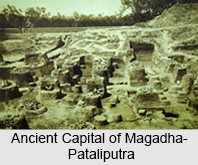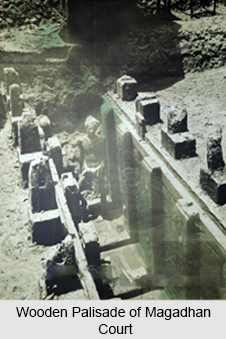 Pataliputra is the ancient name of Patna. During the reign of Emperor Ashoka in the third century BC, Pataliputra was the world`s largest city, with a population of 150,000-300,000. It has been the capital of major powers in ancient India, such as the Shishunaga Empire, Nanda Empire, Maurya Empire, Gupta Empire and Pala Empire. During the Mauryan period it became one of the largest cities in the world. According to the historian Megasthenes, during the Mauryan Empire Pataliputra was among the first cities in the world to have a highly efficient form of local self government.
Pataliputra is the ancient name of Patna. During the reign of Emperor Ashoka in the third century BC, Pataliputra was the world`s largest city, with a population of 150,000-300,000. It has been the capital of major powers in ancient India, such as the Shishunaga Empire, Nanda Empire, Maurya Empire, Gupta Empire and Pala Empire. During the Mauryan period it became one of the largest cities in the world. According to the historian Megasthenes, during the Mauryan Empire Pataliputra was among the first cities in the world to have a highly efficient form of local self government.
Etymology of Pataliputra
The etymology of Pataliputra is still quite uncertain. According to a traditional etymology Putra means son, and patali is a species of rice; so the city was named after the plant. Another tradition says that Pa?aliputra means the son of Pa?ali, who was the daughter of Raja Sudarshan. As it was known as Pa?ali-grama (Pa?ali village) originally, some scholars believe that Pa?aliputra is a transformation of the Pa?ali town.
History of Pataliputra
Megasthenes, the Greek ambassador described Pataliputra as the greatest city in India. The city of Pataliputra was formed by the fortification of a village by Haryanka ruler Ajatashatru, son of Bimbisara. Its central location in north eastern India led rulers of successive dynasties to base their administrative capital in Pataliputra; from the Nandas, Mauryans, Shungas and the Guptas down to the Palas. Situated at the confluence of the Ganges, Gandhaka and Son rivers, Pataliputra formed a water fort, or jaldurga. Its position helped it to dominate the riverine trade of the Indo-Gangetic plains during Magadha`s early imperial period.
 Geography of Pataliputra
Geography of Pataliputra
Pataliputra is stretched out along the south bank of the Ganga River. The Ganduk River empties into the Ganga from the north at Pataliputra, and the Son River enters the Ganga from the south, some miles to the west of the city. A smaller river, the Punpun, also enters the Ganga from the south at Pataliputra. Because of the city`s location near the confluence of three large rivers, trade has always been an important part of its economy.
Tourism in Pataliputra
Pataliputra has many tourist spots. Some of the places of interest are Hanuman Mandir which is situated in front of the Patna city, Agam Kuan, the unfathomable well that dates back to the time of King Ashoka. Kumhrar, the site of the ruins of Pataliputra etc. Takht Shri Harmandir Saheb, consecrates the birthplace of Guru Gobind Singh. State Secretariat Building and its Clock Tower is an example of early British art style. Phulwari Shareef Patna Planetorium Moin-Ul-Haque Stadium is the second largest cricket ground in India. Golghar is the oldest British building in Patna. Patna Museum has a fine collection of stone and bronze sculptures and terracotta figures of Hindu and Buddhist artists.
Didarganj Yakshi is the most prized collection of this museum. Begu Hajjam`s mosque Pathar ki Masjid was built by the elder brother of Shah Jehan. Qila House is famous for its jade collection, Chinese paintings and other far eastern work of art, collected by Diwan Bahadur Radhakrishan Jalan. Sadaqat Ashram is located on the banks of the Ganga River. Zoological and Botanical garden Padri Ki Haveli, deemed to be the oldest church in Bihar dating back to 1772. Gandhi Maidan was called the Patna Lawns during the rule of British East India Company and later the British Government in India. Nagholkothi is an example of unique architecture with beautiful garden of Mughal style.
Visiting Information to Pataliputra
Pataliputra Junction railway station and Patna airport are the nearest means to access the city of Pataliputra. It can also be reached by road via National Highway 19 and 20.



















